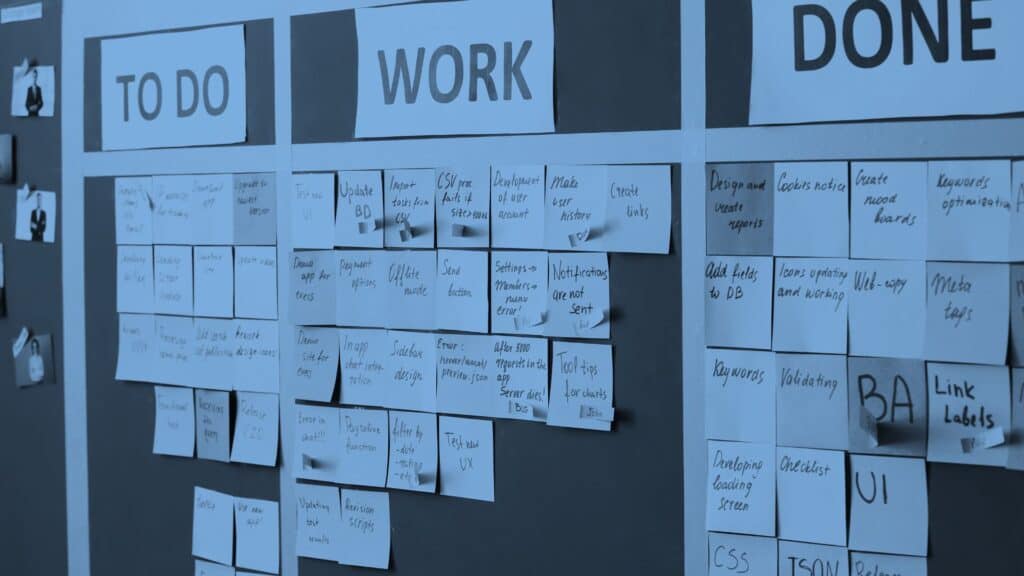In my last post, I outlined some of the risks in over-relying on employee resilience, including unwelcome interpersonal behaviour, erosion of the organisational reputation, and eventual burnout.
If this left you wondering what you can do in your own organisation instead of just beating the ‘resilience drum’, this post may hold the answer.
So what’s the alternative?
Let’s first clarify three potential levels for this kind of activity.
1. The Primary Level of intervention focuses on the removal of threats to wellbeing from the workplace. This includes:
- Minimising stressors (factors which we know can cause job-related stress)
- Removing health and safety risks
- Any other proactive measures that reduce the risk of work and the workplace having a negative impact on employees’ wellbeing.
2. While it would be amazing if all organisations were able to remove all threats to wellbeing, this is simply not realistic. So the Secondary Level of intervention includes training and coaching to prevent illness and promote wellbeing. (Yes, resilience training fits here, but is insufficient and potentially counter-productive when relied on in isolation).
Other examples of secondary level interventions include:
- Training to promote ergonomic workplace set-ups
- Wellbeing programmes that equip employees with sustainable and healthy ways of coping with reasonable demands and challenges
- Any initiatives that promote healthy movement through the working day.
3. If neither the Primary or Secondary levels of intervention are enough, organisations end up investing in what we call Tertiary interventions. These include stress management counselling or coaching, psychological therapy, and graduated return to work programmes for those whose stress-related illness necessitated a break from work. Basically, anything that helps employees overcome the damage done to them by work.
With three options available to you, where should you start?
It’s literally in the name
The primary in ‘Primary level’ interventions underlines the benefits of prioritising them. Secondary initiatives to up-skill and empower employees can be built once work and the workplace are as healthy as practicable. To avoid the ultimately negative impact on employee wellbeing, and associated direct and indirect costs, investment in primary then secondary interventions is key.
Research consistently highlights the six areas that are most likely to lead to job-related stress, and so these represent an excellent starting point for any leadership team wishing to improve wellbeing. And simultaneously lessen the ‘need’ for resilience training. As such, they represent a handy reminder of what needs to be in place and where you can focus before reaching for resilience training.
1. Demands

Fundamentally, this is about ensuring that the demands employees have to deal with are reasonable. Unreasonable demands (like workload) lead to longer working hours, unnecessary mental strain due to unachievable targets, and eventual illness. Of course, in many workplaces, demands will fluctuate for any number of reasons.
At the same time, chronic unmanageable demands are toxic. Healthy workplaces will have processes in place to monitor this, managers who can effectively distribute workload, and channels in place for employees to raise their concerns about demands.
💡 Demands – what you can do:
- Proactively review how workload is assigned to employees, identify any unsustainable demands and consult with employees on how to improve the situation.
- Ensure your managers are trained in how to sustainably distribute workload to their team members.
2. Control

This is all about job design that gives the employee a say over the pace of their work, enables them to use their skills and initiative to deal with demands, and allows them to take the breaks required to maintain their wellbeing. Obviously, micro-management flies in the face of this requirement and is a short cut to stress. Line managers at al levels can support employee wellbeing by giving employees the decision-making latitude and skill-development opportunities to remain on top of demands.
💡 Control – what you can do:
- Ensure manager are trained in effective delegation and a management style that maximises freedom and flexibility.
- Explore ways of meeting the need for flexibility among your employees, including hybrid working arrangement.
3. Role clarity

This refers to the essential requirement that we all have to understand the limits of our role and responsibilities, and how our role and efforts contribute to team and organisational success.
As time passes, roles tend to grow in terms of responsibilities, and unless these are regularly reviewed, the role either becomes too much for any single person, or unintended incompatibilities start to impact the role holders.
💡 Role clarity – what you can do:
- Through all talent management activities, from recruitment through to promotion, ensure that roles are clearly and realistically defined.
- Ensure that there is alignment from an individual role through to the strategy and goals of the organisation.
4. Support

As the name implies, this is all about ensuring employees know the various sources of support they can access in all aspects of work. It implies the need for appropriately-trained managers, clear sign-posting of support facilities and employees simply having access to the resources they need to effectively do their jobs.
Support also applies to appropriate levels of performance feedback, and opportunities to access support from peers and colleagues.
💡 Support – what you can do:
- When considering demands, ensure your focus is just as much on the resources employees need to thrive at work.
- Provide effective feedback training to all managers and team leaders.
- Ensure initiatives like employee assistance programmes are clearly signposted and train all managers and team leaders in how to deliver effective and actionable feedback.
5. Relationships

This primarily includes the absence of inter-personal conflict, unacceptable workplace behaviour and harassment or bullying. But it also includes fostering positive working relationships, opportunities to truly connect beyond task-based interactions, and the cultivation of a positive team climate. Where relationships aren’t working, employees need to know how they can raise this, get support, and experience an appropriate outcome.
Fostering effective interpersonal relationships and connection can help prevent loneliness among employees, and all of its toxic consequences.
💡 Relationships – what you can do:
- Challenge unacceptable behaviour at work, even from ‘high performers’.
- Invest in giving employees the opportunity to chat socially, get to know each other and engage in team-building activities.
- Don’t assume because people aren’t alone they’re not feeling lonely.
6. Change

How organisations manage and communicate change can have a major impact on employees’ wellbeing. When managing change, organisations need to ensure clear and timely communication with employees, as well as providing opportunities for feedback or contribution from employees or representative groups.
Change that has a material impact on employees’ roles or workplaces need to be accompanied by appropriate training and support.
💡 Change – what you can do:
- Successful organisational change isn’t the result of a neat Gantt chart. It takes place when employee perspectives are included, when they are consulted and when they are involved in making it a success.
- Ensure all change projects include an opportunity for impacted employees to share their perspectives and access help and support.
How we can help
Yes, we provide training in resilience-building skills. So if you’ve successfully minimised all of the above workplace stressors where you work, then let’s discuss resilience.
Otherwise, we can also help you consider workplace wellbeing strategically and identify priorities for action. We also have a full suite of management skills training options. And should it be required, we can also provide coaching for a range of wellbeing topics.

